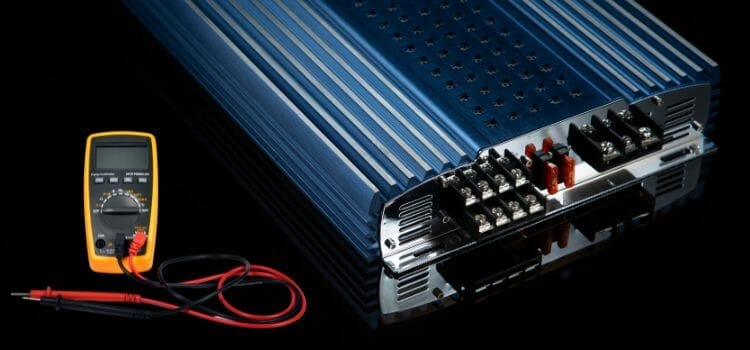How to Hook Up Two Amps with One RCA Jack? 3 Easiest Methods
Two amps for speakers and subs instead of one (multi-channel amp) to manage it all is always the way to go if you want absolute high-fidelity sounds. Separate amps for speakers with distinguished frequency responses give a more resolute control and a more enhanced sound quality.
But doing up setups in a car where the head unit features a single RCA output may be daunting unless you learn how to split RCA for multiple amps. Nonetheless, that’s still not rocket science either.
All you need to do to hook up two amps with one RCA jack is get a couple of RCA splitters or a line output converter (LOC) to maximize the number of ports for connecting more amps. Or you can daisy-chain the two amps to achieve the desired results.
This article will explain all three methods to help you decide on the best method you can try to split a single RCA for two or more amps. So keep patience and read along.
How to Hook Up Two Amps with One RCA Jack?
So, as already mentioned, there are three widely known ways you can wire two (or more) amplifiers to a car head unit with a solo RCA output. They include utilizing the RCA Y-Splitter cables, daisy-chaining the multiple amps, and getting a Line Output Converter (LOC) device.
So let’s explore and evaluate them and see which of these three may be the way-to-kill method.
#1. Using the RCA Splitter Cables
The RCA splitters, also called Y-Splitter cables, are the first, foremost, and most prevalent of all the methods used in car audio setups to create two signals for each set of RCA plugs. They make it easy to introduce multiple amplifiers into your setup no matter if or not your stereo can directly feed them.
These cables come in different forms including all-female, all-male, male-to-female, female-to-male, 3.5mm to male/female, etc. The term “male/female” signifies their structure and how they work i.e. plugs (males) or jacks (the acceptors – females).
Before I show you how to install splitters to serve your needs, make sure you’ve got a couple of Y-Splitters (preferably “1-male to 2-females”) as well as two standard RCA cables in addition to the new amp. Once you’ve it all, follow the below-given steps:
- Unplug all the previously-done RCA connections
- Plug the Y-splitters into the head unit’s two RCA jacks through their male sides
- Now the female sockets of both these splitter cables will accept the correspondingly colored RCA cables – the red and white plugs of both the RCA cables will go into the red and white sockets on both the Y-Splitters, respectively
- You’ll now have 2 pairs of RCA cables (4 in total) that will run down the car to hook into both the amps at their respective (color-wise) ports – reds from both the pairs into the reds on both the amps and whites into whites
- Turn on your sound setup and you’ll have both the amps up and running
Apart from simple splitter cables, you can also go with multi-dock adapters or distribution blocks if you want to add more amps to the system.
One mighty plus of RCA splitters is that they don’t as such heavily split the voltage and don’t leave you with just a portion for each split. So you get almost the full-fledged punch on all the ports, and thus there’s not much low-down into the intensity and quality of sound (unless on higher volumes) if the connection is well done.
#2. Via Daisy-Chaining the Amps
This method also involves using splitters but this time in a completely different way. In daisy-chaining the amps, we are actually running down from the stereo to one amp and then jumping the two amplifiers (wiring them in sequence) using another splitter cable.
Here’s how this method works:
- Simply hook up a standard RCA cable to your stereo/radio/head unit
- Run that cable down and plug it into the respective input ports (red into red and white into white) on the first amp
- Get a (1-male to 2-female) RCA splitter, plug its one end into the output port of 1st amp
- Hook up its other end to another daisy-chain splitter which on its other end will then go into the input jacks on the 2nd amplifier
- Power it up and test the setup
Daisy-chaining amps to a solo RCA jack is almost the Xerox of the previous method in how it works, but you’ve got a few more advantages here compared to the previous one. For example, a tad bit more space storage and quite straightforward wiring schema.
Nevertheless, there may be issues like not as high work efficiency due to a lot of nodes and bumps all along the way and, maybe, some electrical turbulences – quite rare though.
#3. By Employing Line Output Converters (LOC Bricks)
The most premium and risk-free of the three methods, getting a line output converter means adding several RCA ports from nowhere. Line output converters (LOCs) are electronic devices that convert speaker-level output signals into RCA preamp-level signals.
LOCs encase properly engineered miniature components (i.e. high-power resistors, a transformer, and a neutral-point-clamped converter) that allow you to connect your car’s radio to the amps without any risk of failure of any kind.
These devices flaunt a number of RCA ports to make it easier for you to make multiple connections at once. That’s why using LOCs to split signals between multiple amps is a no-brainer.
All it involves is a couple of steps starting from properly installing the LOC by running down all the wires from the stereo to the corresponding ports on the LOC (i.e. hooking up front left/right to front left/right ports and rear ones to the corresponding rear ports on the LOC, respectively).
Once done, your line output converter is like a multi-channel RCA bus which you can directly connect to as many amps as the channels available (on LOC) via standard RCA cables.
The advantage of this method is that you can get not only two but more ports easily with bigger devices. However, it does require a proper power inflow first to operate, unlike other splitters where it’s simply the plug-and-play thing altogether.
Additionally, if there’s any power lost when using simple Y-Splitters, the LOCs make sure that also stays intact and offers the full quota to each amp in your setup.
Wrap Up
So that’s all about how to hook up two amps with one RCA jack. You just saw all the possible ways you can do this alongside the potential pros and cons associated with each method.
Using simple RCA splitters is the easiest of all the methods that require no power whatsoever. However, that may be not as efficient as expected due to the slight power split which may result in audio clipping on higher volumes.
The daisy-chaining method also has its fair share of advantages and disadvantages with the risk of electrical hazards to happen being the biggest downside. Whereas, the LOC method is the safest and most efficient of all, but then it involves a bit of extra cost compared to the previous two.
So that’s it from my side. Over to you now to decide which method suits you the most. Cheers.






